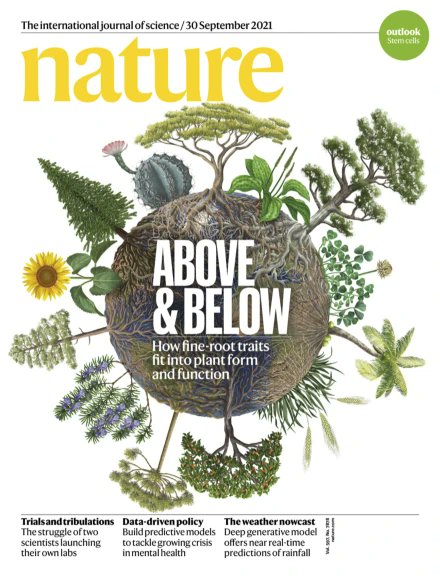Workgroup paper featured on the cover of Nature magazine

Our workgroup members Carlos, Riin, Aurele and Meelis published a new paper in this week's Nature magazine! The study was done in collaboration with members from the Plant Ecology Laboratory (Guillermo Bueno, Mari Moora and Martin Zobel), Landscape Biodiversity workgroup (Sabrina Träger who recently started a job in Germany), as well as colleagues from Argentina (Sandra Díaz) and Canada (Alison Munson). They explored global relationships between the aboveground functional traits of 39 260 plant species and fine root traits of 2050 species. Turns out that the aboveground and fine-root traits of species are fundamentally decoupled so that the aboveground functional strategy of a plant does not reveal almost anything about its fine-root strategy, and vice versa. They also found that groups of plants (e.g. herbaceous or woody plants, different families) mostly differentiate in their aboveground traits, but they tend to be much more similar in terms of their fine roots. Understanding the covariation of aboveground and belowground traits will help to explain how evolution has shaped whole plant strategies to cope with biotic and abiotic environments.
Carmona, C.P., Bueno, C.G., Toussaint, A., Träger, S., Díaz, S., Moora, M., Munson, A.D., Pärtel, M., Zobel, M., & Tamme, R. 2021. Fine-root traits in the global spectrum of plant form and function. Nature 597: 683–687.
Cover image: Luís Gustavo Barretto Rodrigues